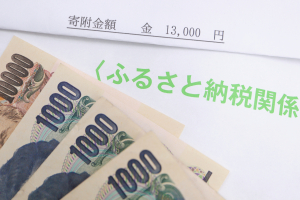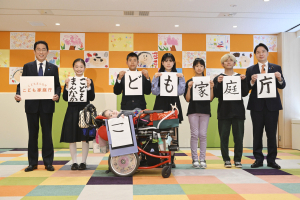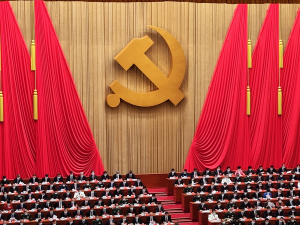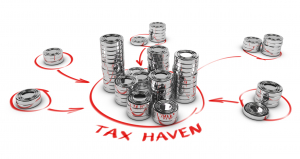
Urban Stormwater Management and the Role of Civil Society
April 3, 2023
R-2022-102E
Japan’s major cities are not well prepared to cope with the expected rise in the frequency of torrential rainfall. Steps should be taken, rainwater harvesting expert Michiru Sasagawa notes, to not only upgrade urban infrastructure but also encourage smaller-scale efforts at the community level.
* * *
Statistics show that heavy rainfall of 50 mm or more per hour is becoming increasingly common. According to the Japan Meteorological Agency, there were roughly 327 such incidents on average per year over the past decade (2012–21)—a 40% increase over the first decade for which records exist (1976–85), when the equivalent figure was an average of around 226 incidents.[1] This trend is expected to continue in the years to come. In particular, concentrated bursts of heavy rainfall are expected to increase, even as the total number of days with precipitation is likely to decrease.[2]
Urban Stormwater Risks
Unfortunately, Japan’s metropolises are not in good shape to cope with the increased risk that will come from heavy rainfall. Patterns of land use in the greater Tokyo area show that the capital region lost 22% of its green spaces between 1965 and 2003.[3] Green spaces play a crucial role in absorbing runoff after heavy rainfall and ensuring that urban waterways and sewage systems are not overwhelmed by a sudden surge of stormwater. According to the Tokyo Bureau of Sewerage, when the current system of sewers and drains was put in place, around 50% of total rainfall was absorbed into the ground. That figure has now fallen to around 20%.
There are two types of sewer systems: “combined,” which conveys both stormwater and sanitary sewage through a single set of pipes, and “separate,” where rainwater and domestic wastewater run through different networks. Although separate systems account for 84% of all sewers nationwide, urban areas often have combined systems; in the 23 wards of Tokyo, for example, 82% of sewers are combined. If rainfall of around per hour or more occurs more frequently as projected, we can expect to see a dramatic surge in the volume of stormwater entering the city’s sewer systems.
In the event of heavy rainfall, wastewater treatment plants can handle up to three times the normal volume of wastewater, but anything in excess of this is released into rivers and other waterways. This results in sewage waste being released into rivers an average of nearly 40 times a year, becoming a major source of poor water quality.[4]

The photos above show the Nomigawa River in Tokyo on a rainy day in June 2022. The water level rose quickly within about 10 minutes of the onset of heavy rain (left). An unpleasant smell was detectable, suggesting that wastewater mixed with stormwater had been released into the river when the volume exceeded the capacity of a wastewater treatment plant. Water levels visibly declined after about 30 minutes (right).
Civil Society Initiatives
Sumida-ku—one of Tokyo’s 23 special wards—is in a low-lying area hemmed in by rivers and canals. As large green spaces disappeared with the advance of urbanization, floods became more frequent. To address this situation, the local government adopted urban flood control measures in the second half of the 1980s, establishing facilities to store excess stormwater for a time before releasing it slowly. It also launched a campaign to harvest rainwater in an attempt turn what had been a flood threat into a resource. Rainwater recycling initiatives were implemented on both a large scale, such as at the Ryogoku national sumo stadium, and—with the help of subsidies—at smaller venues and residences. Guidance was established for water harvesting features at new developments covering an area of 500 m2 or more, and such features were made compulsory at all public facilities.
Launched in 1995, People for Rainwater is a nonprofit organization of which I am currently a director. Our activities, initially based mostly in Sumida, aim to reduce the risk of urban flooding through community action, providing information and advice to residents interested in harvesting and utilizing rainwater, as well as working with ward authorities to boost awareness through lectures, online activities, and various events.
At present, there are rainwater harvesting facilities in the ward at both public and private facilities, as well as small-scale storage tanks in the neighborhood, with total capacity to hold 26,033 m3 of rainwater.[5] This, People for Rainwater found, in the ward—assuming all tanks were empty. In other words, the tanks had a rather limited impact on reducing runoff into waterways, and we needed to reconsider the significance of our activities.
The Potential of Small-Scale Efforts
We subsequently found that if storage capacity could be doubled from 2 mm of rainfall to 4 mm, the frequency of wastewater discharges into rivers—which currently take place nearly 40 times a year—could be reduced by almost half. A pilot project will soon be launched centered on the Kyojima district of Sumida.
While this promises to reduce the environmental burden, several issues remain from the viewpoint of water management. According to the Tokyo metropolitan government’s basic policy on heavy rainfall (revised in 2021),And while guidelines are given for private homes, the water capacity of rainwater tanks installed by individual residents are currently not counted in Tokyo’s flood control that the government has no control over how individuals manage or use such tanks.
At the moment, it would be fanciful to suggest that private, small-scale efforts to harvest and recuperate rainwater are playing a role in stormwater management and drainage. But the potential is there. After installing a rainwater tank, people discover that plants can be watered without using tap water. When people start to appreciate the benefits of rainwater, they may even start to look forward to rainy days. They might develop a sense of the volume of water that will in accumulate according to the strength of downpours. The simple act of installing a rainwater tank will give people a better sense of how rain affects daily life.
The sight of rainwater tanks in the urban landscape also serves as a visible and concrete symbol of coexistence between humans and the weather. Both through community action and government policy, the message should be communicated that efforts to mitigate stormwater flows are closely linked to quality of life and that residents can make a meaningful contribution to building safer and better cities by saving water.
Proposals for Urban Stormwater Management
Expand the use of small-scale rain harvesting technologies as part of green infrastructure
In recent years, the national government has been promoting the idea of green infrastructure, which harnesses the power of the natural environment to create sustainable and attractive communities and prevent or mitigate natural disasters. This approach was included in the national land development plan adopted by the cabinet in 2015, and in March 2020 a public-private platform for green infrastructure (with 1,480 members as of June 2022) was launched. In July 2021, green infrastructure was also designated a priority project under the Green Challenge initiative of the Ministry of Land, Infrastructure, Transport, and Tourism.
To combat the increasing threat of floods and heavy rainfall in the years to come, a diverse and adaptable approach will be vital. In addition to large-scale efforts in public spaces, smaller-scale management technologies that can be introduced by private households should be incorporated into national and local government policy. Examples of such technologies include not only rainwater tanks but also downspout disconnection, rain gardens, downspout planters, green streets and alleys, and green roofs, as shown in the photos below.


Besides making meaningful contributions to rainwater harvesting and management, these simple, small-scale technologies can result in a greater sense of satisfaction through personal engagement with DIY and gardening—activities that are enjoyable in their own right.
It would be helpful, therefore, to be able to verify the effectiveness and sustainability of these approaches. Guidelines for the installation and management of small-scale facilities can be drawn up based on follow-up studies of Sumida’s initiatives and the monitoring of newly instated green infrastructure, and recommendations to local authorities can be made to institutionalize these initiatives.
Identify the right balance between private and institutional initiatives
One key to resolving environmental issues and achieving the Sustainable Development Goals is to make these issues more relevant to people’s lives. Not everyone can address all of society’s challenges, of course, so the roles of civil society should be to raise awareness, pioneer new technologies and approaches, and work with public authorities to establish new policies. Issues will likely persist, even after such actions are taken, but they can nonetheless stir a hitherto disinterested segment of the public to take notice. New policies and technologies could eventually result in rainwater tanks being installed in all new homes and for such tanks to automatically become empty before rainfall, without the need for human intervention. Resolving societal challenges will require striking the right balance between enhancing personal awareness, on the one hand, and implementing institutional, structural changes that can achieve improvements without additional effort by individuals, on the other.
Improve water literacy to forge closer links between policy and lifestyles
Improving water literacy will be vital in forging closer links between policy and people’s lifestyles. A survey conducted by the Mizkan Center for Water Culture shows that for many people with an interest in water issues, their formative experience dates to childhood education.[7] Interviews with experts affiliated with the Tokyo Foundation’s research program on Future Vision for Sustainable Water Management also suggest the importance of early learning opportunities in developing an awareness of water-related issues.[8][9][10]
Public communication efforts can play a significant role in highlighting water issues. Many more people might be prompted to take climate change action if rain-related news featured members of the popular boy band Arashi (meaning “storm”). Meteorological phenomena rose to public prominence following the release of the 2019 anime film Weathering With You by Makoto Shinkai. Even offbeat ideas like developing alcoholic and other drinks from harvested rainwater might prompt more people to start seeing rainwater as a valuable resource.
[1] Oame ya moshobi nado (kyokutan gensho) no kore made no henka (Changes to Date in Heavy Rainfall, Extreme Summer Heat and Other Extreme Weather Phenomena), Japan Meteorological Agency, accessed December 28, 2022, https://www.data.jma.go.jp/cpdinfo/extreme/extreme_p.html.
[2] Nihon no kiko hendo (Climate Change in Japan), Japan Meteorological Agency, accessed December 28, 2022, https://www.data.jma.go.jp/cpdinfo/ccj/2020/pdf/cc2020_shousai.pdf.
[3] Midori no seisaku no genjo to kadai (Green Policies: Current Status and Outstanding Issues), Subcommittee on Urban Planning and Historic Landscapes, Social Infrastructure Development Council, MLIT, accessed December 28, 2022.
[4] Goryushiki gesuido no genjo to kadai ni tsuite (Combined Sewer Systems: Current Status and Issues), Tokyo Metropolitan Government, https://www.gesui.metro.tokyo.lg.jp/about/pdf/currentproblem.pdf.
[5] Usui riyo jisseki (Results of Rainwater Harvesting), current as of end March 2022, accessed December 28, 2022, https://www.city.sumida.lg.jp/kurashi/kankyou_hozen/amamizu/riyou/dounyuu_sisetu/amamizu_riyouzisseki.html.
[6] Tokyo-to gou taisaku kihon hoshin (Basic Policy of Tokyo Metropolitan Government for Responding to Concentrated Heavy Rainfall), accessed December 28, 2022, https://www.toshiseibi.metro.tokyo.lg.jp/kiban/gouu_houshin/.
[7] Mizkan Center for Water Culture, 28th Survey on Lifestyles and Awareness of Water Issues (2022), accessed December 28, 2022, https://www.mizu.gr.jp/chousa/ishiki/2022.html.
[8] “Murakami Michio (Osaka Daigaku), anzen no yoridokoro wa do kimaru? Mizu kara risuku o kangaeru (Determinants of Safety: Thinking about Water-Related Risks), Interview with Osaka University’s Michio Murakami by Michiru Sasagawa, accessed December 28, 2022, https://www.tkfd.or.jp/research/detail.php?id=4015.
[9] “Sakamoto Maiko (Tokyo Daigaku), doboku kogaku kara hajimari, kokusai kyoryoku no genba de me no mae no genjitsu o ugokashite iku” (From Civil Engineering to Changing the Reality on the Ground through International Cooperation), Interview with the University of Tokyo’s Maiko Sakamoto by Michiru Sasagawa, accessed December 28, 2022, https://www.tkfd.or.jp/research/detail.php?id=4037.
[10] Takeyama Emi (Ehime Daigaku), chiisana tsunagari o kansatsu shi, sekai o rikai suru me o yashinau (Cultivating an Understanding of the World through the Observation of Small Connections), Interview with Ehime University’s Emi Takeyama by Michiru Sasagawa, accessed on 8:50am, December 28, 2022, https://www.tkfd.or.jp/research/detail.php?id=4071.

![[Policy Research] Water Minfra: A New Strategy for Water-Centric Social Infrastructure](/files/research/2023/Oki_PG/Mizuminhura.png)




![[Policy Research] Water Minfra: A New Strategy for Water-Centric Social Infrastructure](/files_thumbnail/research_2023_Oki_PG_Mizuminhura_png_w300px_h180px.png)











































